What’s the best white paint? Experts reveal the ideal shade for every room
From small spaces to north-facing room, there’s a white paint for every area of your home
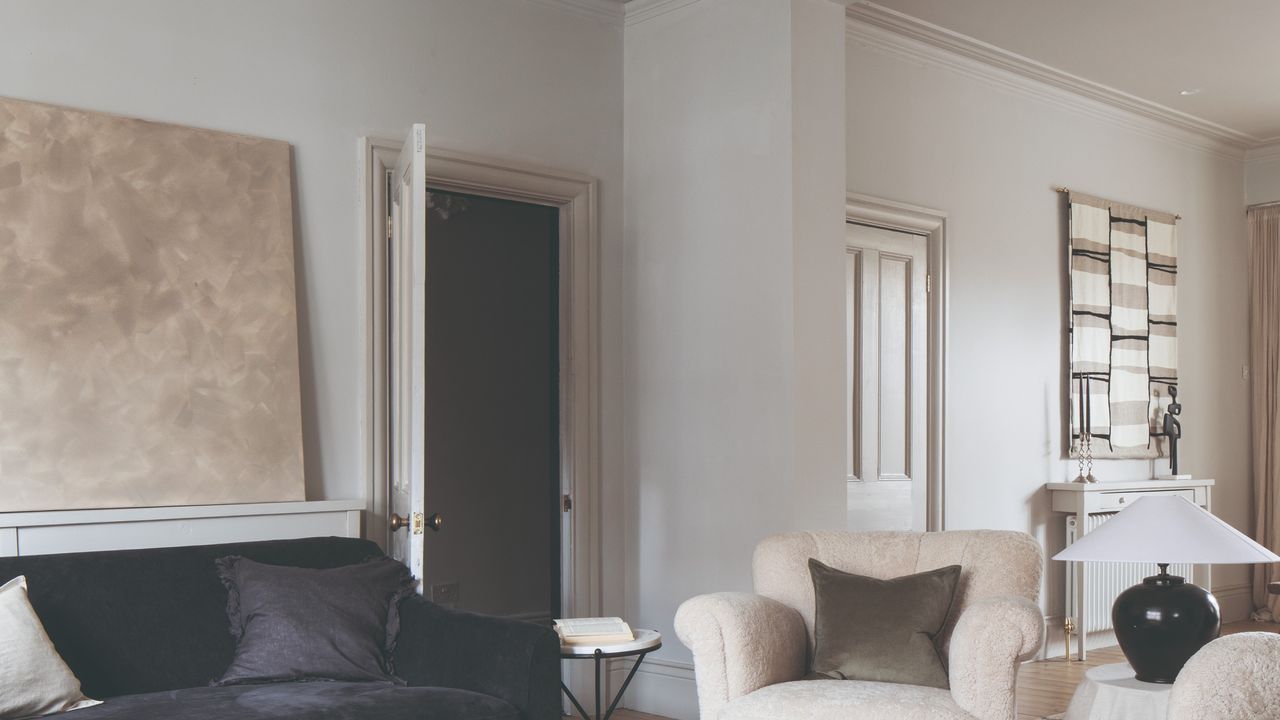

We often refer to white paint as a plain, blank canvas. But to get that canvas right for every room requires a lot of consideration as even something as basic as walls painted in the wrong shade of white can completely offset the feeling of the room. There’s the best white paint for every type of room as everything from the paint’s undertones to the finish needs to be just right.
Despite all the colourful paint ideas out there, white paint is still the world’s favourite – and almost every paint brand will have a white paint as its bestseller. And the sheer volume of different white paints available on the market - as well as the fact most paint companies have a varied offering of several white paints to choose from - shows that this colour of paint is far from boring, despite popular belief.
White walls and white paint are the backbone of every home, even if you choose to be more colour brave in some rooms, you are sure to incorporate white somewhere. And depending on which direction the room’s windows face, the room’s size and use, this is our shortlist of the best white paints for every area of your home.
The best white paint
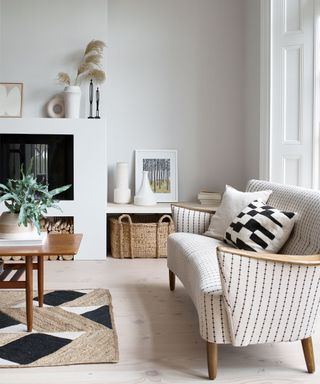
We’ve already touched on the importance of choosing a white paint with the right undertone but Lucy Steele, paint & interiors expert at Valspar Paint, reiterates this important rule, ‘Looking for undertones in white paint that match the amount of natural light in the room and the other colours used, will help you choose the best white.’
But aside from undertones, picking the correct finish of white paint for your room is just as important. ‘It’s essential to choose the right paint finish, as this will make a huge difference in the overall look of the space. Whilst matt paint absorbs light, gloss paint will often reflect it,’ Lucy says.
1. Best for high-moisture rooms
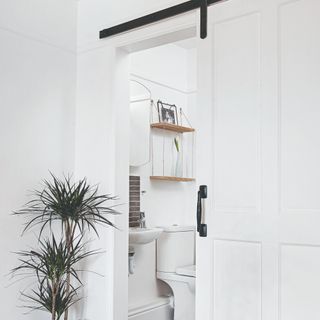
The UK’s regularly wet weather means that many homes end up being very humid. So if that is the case for yours or if you’re looking to paint a room that’s exposed to regular humidity like the bathroom, for example, then this should be reflected in your choice of white paint.
‘Zinsser Perma White Matte is one of our bestselling white paints, simply because it is so versatile, yet affordable,’ says Michael Rolland, managing director at The Paint Shed. ‘This paint is ideal for high-moisture areas, especially in UK homes, where higher humidity levels can make drying clothes indoors challenging. It is resistant to cracks, peeling, and blistering, and happens to be water-based, so it dries quickly. The Perma White range is extremely tough too, meaning they can be scrubbed without comprising the finish or colour.’
Get the Ideal Home Newsletter
Sign up to our newsletter for style and decor inspiration, house makeovers, project advice and more.
Our top pick:

We're not surprised this is one of the bestselling white paints out there - it's mould-resistant, durable, odour-blocking and self-priming. And for £35 a tin, it's very reasonable!
2. Best for small rooms
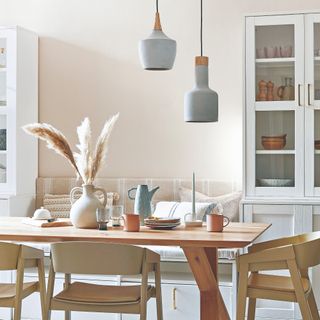
If you’re looking for some small living room colour ideas - or any other compact space for that matter - then white can certainly be a wonderful option as it can visually expand the space.
‘For a small living room, light and neutral colours like whites and creams are best as they reflect more light and create an airy, spacious feel,’ confirms Sam Sutherland, Flitch interior stylist.
But rather than opting for a bright, brilliant white, experts recommend an alternative small living room paint idea – going for a more off-white shade to soften the space which most likely lacks in natural light (as small spaces traditionally do).
‘I would recommend using an off-white such as our Whey White as its warm hue will give you an inviting sense of peace and calm,’ says Caroline Thornborough, design director of Thorndown.
Our top pick:
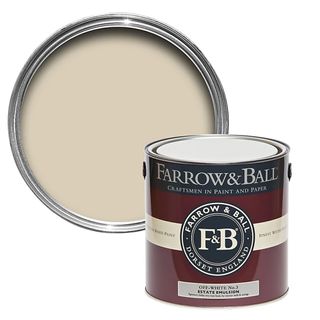
An off-white shade is much warmer than bright white and also less clinical. And you can never go wrong with Farrow & Ball's wonderful shades, this creamy, warm off-white included.
3. Best for north-facing rooms
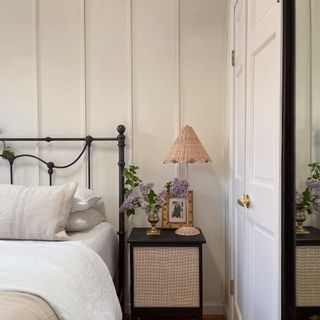
North-facing rooms tend to get a lot less sun throughout the day, so are naturally darker and prone to shadows. This means they can reflect back a greater amount of blue and grey tones, so using a pure white or cool-toned white paint can result in the shade looking a lot darker when it's on the walls – and potentially a bit dismal, especially when looking at white kitchen ideas.
'North-facing rooms are the areas in the house that see the least amount of sunlight, so the colours we choose to put on our walls can have a huge impact in how a space looks and feels,' says Marianne Shillingford, creative director at Dulux. 'As the colour that reflects the most light, white can help all rooms to look much more spacious and those with warmer undertones are perfect for north facing rooms because they offer a visual sunlit warmth the room naturally lacks. Dulux Heritage Roman White and Mallow White each have hints of gold and pink that bring a cosy summer glow to even the chilliest of rooms.'
For this reason warm white paints with undertones of yellow or red are generally recommended for north-facing rooms, where they'll look a lot less 'creamy' than they would painted in a room with a south-facing aspect.
Tash Bradley, Lick’s director of interior design and colour psychologist, adds, 'Northern light is the coolest of the lot. It casts a blue hue, so try to avoid cool whites. Instead, look to whites which have warm undertones like Lick White 03.'
Our top pick:

Lick's best-selling white shade, White 03, is loved for its warm, comforting undertones. 'White 03 is a soft, uplifting neutral designed to soak up rays of sun before reflecting them back into the room so you and your space feel lighter and brighter. Its warm undertones make it particularly comforting in a bedroom,' Tash says.
4. Best for south-facing rooms
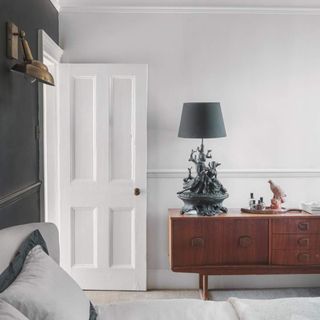
A south-facing room gets a lot of natural daylight and can often be bathed in golden sunshine for a lot of the day. This means any underlying warm tones in a white paint - like yellow, red or brown - will be amplified, making a seemingly innocuous pale ivory white suddenly look decidedly yellow once on the walls.
Consequently, if you want to achieve the appearance of true white in a south-facing room, it's best to stay on the side of cooler tones which will balance out the warmth of the natural light.
Lucy at Valspar says, 'South facing rooms receive the most amount of light, and you don’t need to factor in the sunrise or sunset, as there is a good amount of light exposure for a long period of time. With this in mind, cooler tones, such as Brushed Cotton, work great for a south facing room. As south facing rooms tend to have more light, choosing a matt finish is perfect to balance out the brightness and bring a warmer tone. A matt finish is also good if there are any imperfections on the wall that need hiding.'
Marianne at Dulux continues, 'As the areas of the home that boast the most amount of sunlight, these rooms can benefit from being balanced with a cool white that contains hints of either grey, blue, green or violet. Dulux Heritage Lead White and Swedish White are classic cooling whites with a delicately muted quality which allows sunlight to take centre stage.'
Our top pick:
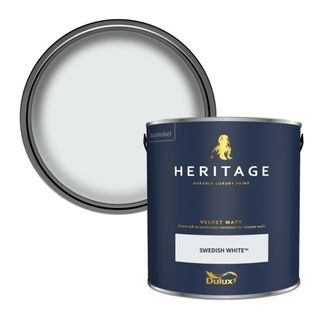
The grey undertones of Dulux's Swedish White paint don't only make it perfect for south-facing rooms, it's also one of the most sophisticated and elevated whites on the market, perfect for pairing with blue and violet shades.
5. Best for skirting boards and ceilings

Even though there are many different ceiling and skirting board colour ideas that you could go for, whether you opt for the impactful colour drenching or a warmer, neutral shade like taupe, white remains the traditional go-to for these architectural features.
So if you, too, want to stick with tradition and paint your skirting boards and/or ceiling white, contrasting the chosen colour of your walls, paint experts recommend opting for a white shade with an undertone that complements your walls’ colour.
‘One of the biggest mistakes I see is people choosing a brilliant white for their skirting boards and ceilings, but not looking at the undertones. Undertones are so important when considering a colour for your space, even if it’s a white. When looking at a white, choose a white with undertones that are the same warmth as the colours of your walls or match the tones in your furniture,’ Tash at Lick says.
‘This will create tonal harmony and reduce the stark contrast between the walls and the white. For example, if you have lovely deep red walls and you want to paint your ceiling and skirting boards white, I’d choose a white with red or pink undertones, like White 06,’ she adds.
Michael at The Paint Shed continues, ‘One common mistake is using non-durable paint for skirting boards. These areas are prone to collecting dirt and grime, so using durable paint is essential for easy cleaning as they can be wiped down frequently without causing damage to the paint. Using oil-based paints should also be avoided as these can yellow over time, making water-based paints a better choice.'
Our top pick:
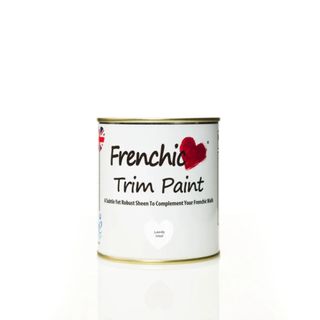
The Lamb's Wool trim paint by Frenchic is the palest of off-whites and it's the perfect choice for skirting boards as it's durable and water-based. Even though the brilliant Whitey White shade is the brand's bestselling trim paint, we'd go for this one (or one of its many other white shades with various undertones) instead, depending on your room decor.
6. Best for painting the entire room

As interior designers know, a white room painted entirely in one solid shade can look flat and featureless. Instead try combining subtle variations on walls, woodwork, cornicing and ceilings to enhance the proportions of a room. Use the brightest white on the ceiling to give an impression of height and slightly darker shades to pick out interesting details. Look for coordinating tones when painting floorboards white.
'Always consider the light aspect of the room you plan to paint, and all the other elements incorporated into your room such as fabrics, furniture and artwork,' advises Patrick O’Donnell, international brand ambassador at Farrow & Ball. 'An easy way to do this is by creating a mood board to see all the components in one place this will give you greater context for the result.'
‘Identify which colours you are drawn to, then simply work your way up your chosen palette to find an off-white tone with a hint of your chosen shade,’ advises Jenny Luck, colour consultant at Little Greene. ‘This will give contrast to the wall colour whilst having a soft transition from the walls onto wood woodwork and ceilings. Much softer and easier on the eye.’
Aaron Markwell, colour curator at Coat Paints, adds, 'For walls and ceilings, you’ll want to choose a white water-based emulsion paint, probably in a flat matt finish, this is the best white paint for interior walls. White paints are available in large tubs, but avoid this low-quality stuff if you can. It’s usually a very cold, bright white, which is usually used for public spaces or in trade. This won't feel particularly welcoming when put in your home though. Instead, choose a high-quality white paint for walls to get the coverage and colour nuances that you want.'

FAQs
How do I choose the right white paint?
'When choosing a white, always try and get a feel for its undertones, particularly when using with another colour' says Dominic Myland, CEO of Mylands. 'A clean white consists of white pigment only, so it is wonderfully uncomplicated to use. When used overall in the space, it will give a very peaceful feel – a visual palette cleanser – or it can complement any colour on the spectrum.'
'Even a hint of colour in a white paint can change its feel significantly – and that’s usually down to personal taste. Some people are drawn to warmer colours, others to cooler colours; choosing an off-white can help a room feel more welcoming and characterful in a very subtle way,' Dominic explains. 'If you’ve got other paint colours within the same room, it’s always worth considering how they interact together. One tip is that for south facing rooms with lots of light, you can get away with pretty much any colour, but for north facing rooms with less light you should consider opting for warmer undertones to balance the cool light and make the room feel inviting.'
Flora Hogg, colour consultant at Craig & Rose, adds, 'When swatching whites, use a pure white as a point of reference to see the true undertone of other white. However, be mindful they can seem dramatic as first due to the contrast but trust the process. Once applied, you will still recognise it as white, but you’ll also notice how it transforms and adapts with the light throughout the day.'
Ruth at Little Greene also advises, 'Once you’ve selected the shades of white you’d like to consider, order sample pots and paint out large swatches onto A4 pieces of paper. By placing them on different walls throughout the day you will see the impact of the varying natural light on the colour.'
What colour white is best for ceilings?
'When choosing the best white for your ceiling consider which option will coordinate best with your home's interiors, wall colours and furnishings,' explains Dominic Myland. 'Again pay attention to the undertones. Mylands Pure White No. 1 is a great option available in our Marble Matt Emulsions. This is suitable for all interior walls and ceilings, including high traffic areas as they can be re-touched, wiped, washed or even scrubbed with no effect on colour or sheen.'
'For a modern look, you can also move away from the traditional white ceiling altogether and paint the ceiling a statement colour – this could be the same as the walls for a really cohesive feel, or a different tone.'
Aaron at Coat Paints adds, 'Water-based emulsion will work just fine on the ceiling and it’s the default choice - but how about this? Choose a white soft sheen emulsion paint for the ceiling which has a subtle shine to it and can be really effective at bouncing light around the room. It’s not for everyone, but it can look super effective especially in low lit spaces or at night with lamps.'
Hopefully, this should take the guesswork out of choosing the best white paint for you.

Holly Walsh was Content Editor at Ideal Home from 2021-2024 but joined the brand back in 2015. With a background of studies in Interior Design, her career in interior journalism was a no-brainer and her passion for decorating homes is still as strong as it ever was, now she is a freelance interiors writer and shopping editor. While Holly has written for most of the home titles at Future, including Livingetc, Country Homes & Interiors, Homes and Gardens and Style at Home, Ideal Home has always been her ideal home, and she can still be found sharing her expertise and advice across both the printed magazine and the website, while also raising her two young children.
- Sara HesikovaContent Editor
-
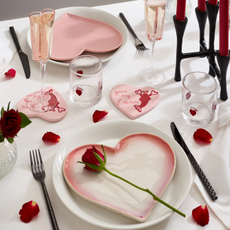 I'm seeing Galentine's Day tableware everywhere on social media — top viral buys
I'm seeing Galentine's Day tableware everywhere on social media — top viral buysFebruary 13 is all about celebrating friendship this year
By Kezia Reynolds
-
 Should you feed houseplants in winter? Experts reveal it may cause more harm than good
Should you feed houseplants in winter? Experts reveal it may cause more harm than goodSkip the plant food to give your houseplants the best chance of survival this winter
By Katie Sims
-
 With this thatched cottage 'all practical thinking went out the window, and my heart won!’'
With this thatched cottage 'all practical thinking went out the window, and my heart won!’'An all-white French farmhouse scheme enhances the beautiful original features of this home
By Alice Roberton
-
 ‘This is how we saved £25,000 on our extension — it never would have been affordable otherwise'
‘This is how we saved £25,000 on our extension — it never would have been affordable otherwise'See how we turned an ugly car port into a luxury media room on a budget
By Laura Crombie
-
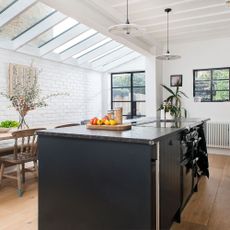 Side return extension costs — how much will it cost you to add space and will it be worth it?
Side return extension costs — how much will it cost you to add space and will it be worth it?Trying to budget for your side return extension costs? Our guide makes it easy
By Natasha Brinsmead
-
 How to make the most of living on-site during a renovation project — according to those who have done it
How to make the most of living on-site during a renovation project — according to those who have done itThis is what it's like to live on-site during a renovation project, and how you can make the most of it, by those who have been there, done it and lived to tell the tale
By Sarah Handley
-
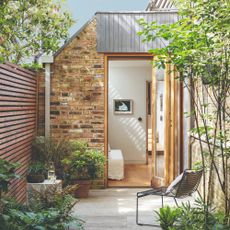 Single storey extensions — the ultimate guide to adding more space to your home
Single storey extensions — the ultimate guide to adding more space to your homeConsidering a single storey extension as a way to add space and value to your home? Our expert guide takes you through everything you need to know, from permissions and budgeting to foundations and the realities of living on-site
By Natasha Brinsmead
-
 Are you making this open-plan living mistake? George Clarke reveals the common mistakes people make when renovating their homes
Are you making this open-plan living mistake? George Clarke reveals the common mistakes people make when renovating their homes'You've got to make sure you get the balance of the space right.'
By Kezia Reynolds
-
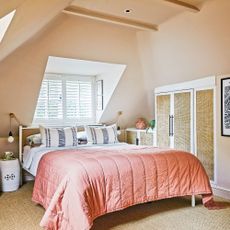 Do you need planning permission for a loft conversion? Not always say the experts
Do you need planning permission for a loft conversion? Not always say the expertsWhen do you need planning permission for a loft conversion and when might you be able to go ahead without making an application? Our guide explains all
By Natasha Brinsmead
-
 If you don't yet know the home renovation trends for 2025, your project might just be missing out
If you don't yet know the home renovation trends for 2025, your project might just be missing outBrush up on the latest home renovation trends to ensure the work you carry out will bring your property bang up to date
By Natasha Brinsmead
-
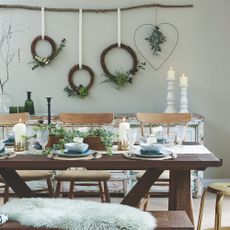 23 Christmas wreath ideas to add a festive flourish to doors, tables or mantels
23 Christmas wreath ideas to add a festive flourish to doors, tables or mantelsThis is how to adorn your home and front door in style this festive season
By Nicky Phillips